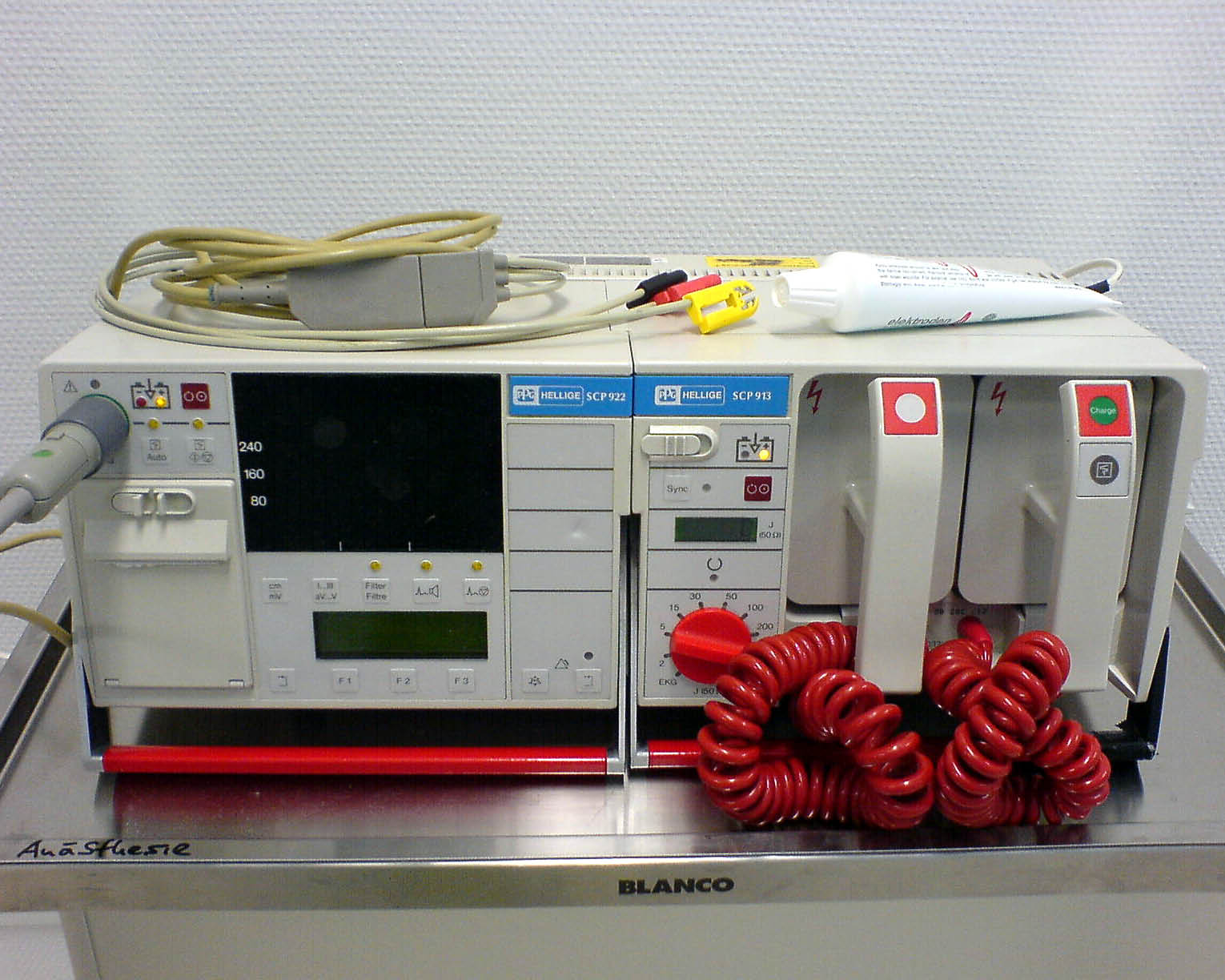Cardiopulmonary resuscitation/secondary school (nurse)
Cardiopulmonary resuscitation (CPR) is indicated for loss of consciousness when normal breathing is not present.
Types of CPR[edit | edit source]
BLS – basic life support – basic emergency resuscitation without special equipment and aids = first aid.
ALS – advanced life support – extended emergency resuscitation, which is performed by a healthcare professional using drugs, aids and special procedures = provision of professional first aid.
Basic vital functions[edit | edit source]
The basic life (vital) functions include:
- consciousness;
- breathing;
- bloodstream;
- indoor environment.
The failure of one basic vital function leads to the collapse of the vital functions of the others → sudden cessation of circulation.
Unconsciousness within 10–15 s, up to 60 s gasping breaths, respiratory arrest, fixed mydriasis, central cyanosis or pallor; Within 4-5 minutes, irreversible damage to brain cells begins!
Circulatory arrest occurs in 4–10 minutes.
Procedure for basic emergency resuscitation[edit | edit source]
- Remember your own safety!
- Assess the situation, the quality of consciousness (addressing, shaking); in case of massive bleeding state of bleeding.
- Call for help and call the EMS (155, 112).
- Release the airways by tilting your head.
- Check breathing (hear, see, feel); It must not last more than 10 seconds.
- Is an AED within range? If YES, use it.
- 30 chest compressions with a frequency of 100–120 per minute, compression depth 5–6 cm.
- 2 inhalations – tilt your head, block your nose and inhale – consider the risk of transmitting the infection. Breathing must not be delayed by a heart massage!
Procedure for basic emergency resuscitation in children[edit | edit source]
We distinguish: Newborn and infant (different heart massage technique) and children from 1 year to 18 years.
- Remember your own safety!
- Assess the situation, the quality of consciousness (addressing, shaking); in case of massive bleeding state of bleeding.
- Call for help from others.
- Relax the airways by tilting the head in a child older than 1 year, up to one year we put the head in a medium position (do not tilt!).
- Check breathing (hear, see, feel), it must not last longer than 10 seconds.
- Start CPR 5 inhalations.
- CPR for 1 minute, 30:2; two rescuers or one experienced rescuer trained in CPR of children 15:2, newborns and infants 3:1; We compress the chest by 1/3 of the height (up to 5 cm).
- Call EMS (155)
- Is an AED within range? Is it possible to use it for children? → If YES, use it. Use of children's, electrodes, sagittal gluing of electrodes, keys – switch to reduce the discharge energy to 4 J/kg (50–75 J for children 1–8 years).
- 30 chest compressions at a frequency of 100-120 per minute (depending on age – the younger, the faster), compression can be done with one hand, two fingers or both hands with adequate force in the middle of the chest.
- 2 inhalations, stuff the nose (small children breathe into the nose and mouth at the same time).
Procedure for extended emergency resuscitation[edit | edit source]
Carried out by medical personnel.

- Assess the situation, the quality of consciousness (addressing, shaking); in case of massive bleeding state of bleeding.
- Release the airways by tilting your head.
- Check breathing (hear, see, feel), it must not last longer than 10 seconds.
- As quickly as possible, use a defibrillator, evaluate the ECG curve, → ventricular tachycardia without a pulse and ventricular fibrillation are indications for the administration of discharge.
- Give the 1st discharge (monophasic defibrillator 360 J, biphasic defibrillator 200 J).
- CPR 30:2 (frequency 100 compressions per minute, depth 5–6 cm) + secure airways, provide IV entry (or intraosseous entry); Duration 2 minutes.
- Evaluate the ECG, give the 2nd discharge (monophasic defibrillator 360, biphasic defibrillator 200 J).
- KPR 30:2 + provide i.v. entry.
- Evaluate the ECG, give the 3rd discharge (monophasic defibrillator 360, biphasic defibrillator 360 J).
- CPR 30:2 + adrenaline 1 mg in asystole + amiodarone 300 mg in ventricular fibrillation.
- Evaluate the ECG, give the 4th discharge (monophasic defibrillator 360, biphasic defibrillator 360 J).
- Adrenaline every 3-5 minutes.
- We continue CPR + defibrillation + drug administration.
- If we evaluate the ECG as a non-defibrillable rhythm, we will administer adrenaline as soon as we provide i.v. or i.o. entry!
Links[edit | edit source]
Related articles[edit | edit source]
- Extended emergency resuscitation/secondary school (nurse)
- Basic emergency resuscitation/secondary school (nurse)
References[edit | edit source]
- NOLAN, Jerry P. European Resuscitation Council Guidelines for Resuscitation 2010 Section 1. Executive summary. Resuscitation [online]. 2010, y. 81, vol. -, p. 1219–1276, Available from <http://resuscitation-guidelines.articleinmotion.com/article/S0300-9572(10)00447-8/pdf/european-resuscitation-council-guidelines-for-resuscitation-2010-section-1-executive-summary>. ISSN 0300-9572.
- BYDŽOVSKÝ, Jan. Acute conditions in context. 1. edition. 2008. ISBN 978-80-7254-815-6.
